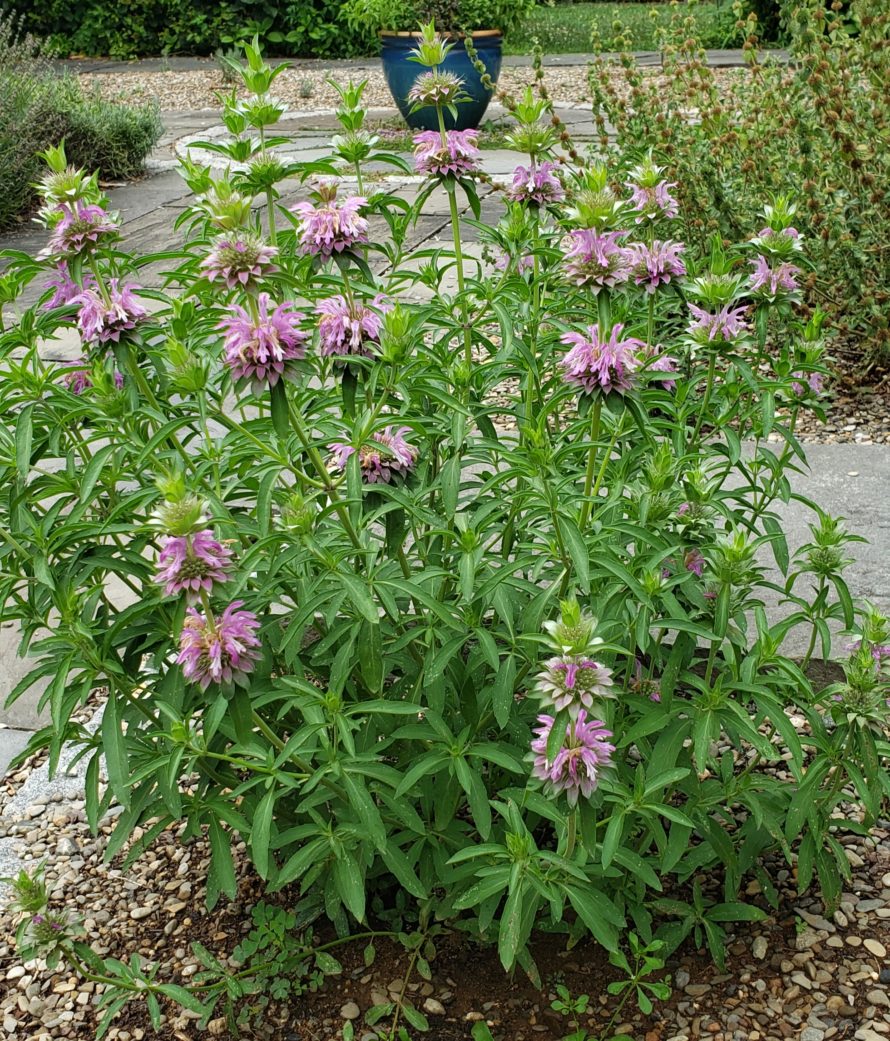Lemon bee balm (Monarda citriodora) is a native plant that is related to bee balm (Monarda spp). It is also known as horsemint. As its name indicates, the leaves have a distinct lemon flavor although later in the season, as the plant ages, it develops a slight oregano taste. The essential oil which gives it its lemony flavor is citronellol which is an insect repellent. It has been used to repel both mites and fleas.
Lemon bee balm has been used medicinally to treat respiratory illnesses such as colds and coughs. It has a few culinary uses. Most people use it in teas or salads or to flavor desserts. It has also been used in wines and liqueurs.
Lemon bee balm is an annual, unlike its cousins the perennial bee balms. It is also shorter, only reaching 2 to 3 feet in height. The plants are drought tolerant. They prefer full sun but will tolerate a little shade. Surprisingly, lemon bee balm prefers soils with high clay content unlike most herbs which must have well-drained soil.
The most striking thing about the plants are the flowers. Instead of the single whorl of flowers common in bee balms, lemon bee balm flowers have multiple whorls stacked one on top of another. Each whorl has white or lavender bracts. Bees, butterflies and hummingbirds find the flowers irresistible.
You don’t have to replant lemon bee balm every year. Allow the flowers to die and set seed. The plants will readily self-sow in your garden. To get them established in your garden, direct sow the seeds after your last frost. Sow them on the top of the soil and gently tamp them into the soil to ensure good contact but don’t cover them. They need light to germinate. Expect them to germinate in 10 to 14 days. Thin your seedlings to 12 to 18 inches apart.
To start your seeds indoors, sow them 7 to 9 weeks before your last frost. Surface sow the seeds because they need light to germinate. Germination should occur in 10 to 14 days. You can transplant your seedlings outdoors after your last frost when the soil has warmed. Space them 12 to 18 inches apart.

